
Laura on Volcán Batea Mahuida with Araucaria araucana in background. Photo by Cody Hinchliff
This January I was very fortunate to be included in Far Reaches Botanical Conservancy’s Patagonian Tour. This was an excellent educational opportunity to join a small group of 12 botanists, horticulturists and plant enthusiasts, led by renowned expert and botanist Marcela Ferreyra. The itinerary focused on observing alpine flora, as January is the best time to see alpine plants in their native habitat in this section of Argentina, but also included opportunities to visit the steppe and montane forests.
After arriving in Buenos Aires, we flew to San Carlos de Bariloche on January 5 to officially begin the tour. No time was wasted, we began botanizing right away, no more than a few minutes from the airport! Marcela (our guide) gave us the challenge of finding our first rosulate viola, difficult as they camouflage so well and these particular ones were out of bloom. But we were all successful in spotting Viola volcanica as well as other treasures, including Tropaeolum incisum in full bloom.
Our second day was the first of many long days. We started by driving through open forests dominated by Nothofagus antarctica in the valley bottoms and Austrocedrus chilensis up slope, admiring the Alstroemeria aurea, Embothrium coccineum and Fabiana imbricata along the road (many of these are also in the South American section of the Alpine Garden). When we reached our destination, Cerro Catedral, we took a series of chairlifts up the mountain. Ski hills often have amazing alpine plants and utilizing the infrastructure can save hours of hiking (all the more time to botanize at the summit!) and Cerro Catedral was certainly no exception to this rule. Despite some threatening weather, the rain held off for the most part and we were treated to a plethora of amazing alpine plants starting from right under the chairlift and continuing as we hiked to a nearby summit. Plants we saw included our first sighting of a rosulate viola in bloom, the first of many Nassauvia, Perezia and Senecio species, and the awe-inspiring snow melt species Callianthemoides semiverticillata. We finished the day by visiting Cerro Otto by walking through an altitudinal forest dominated by Nothofagus pumilio, arriving at our prearranged restaurant for dinner at 8 pm – an early hour by Argentinian standards. I joked at the end of the day that we could all go home, there was no possible way the days ahead could get better than this, but I was wrong!
In the following 14 days of the tour we drove through steppe, took a boat to the Valdivian forest, hiked up volcanos and mountains, and botanized every waking moment, including from the van window – it was hard to get anywhere on time! We recorded 383 plant species, most of which were new to me or I had only read about. I did see 31 species that we currently have in the Alpine Garden, which is about a third of the plants in its South American section. And although many of the plants we saw are endemic to Patagonia, if not South America, there were a couple familiar species such as Armeria maritima, Fragaria chiloensis, and Anemone multifida that are native to both South and North America. Unfortunately, some of the other familiar plants we saw are invasive – they were introduced for timber production and have now naturalized, such as Pinus contorta and Pseudotsuga menziesii.
The final full day of the trip was as exceptional as the first – they were perfect bookends. There was no chairlift this day, though, so we set out hiking early. Starting first in steppe, then through Nothofagus pumilio forest, and we observed how they shrunk from tall trees to shrubs as we climbed in elevation. As we emerged into the alpine, we were greeted by the strong wind Patagonia is so well known for – luckily not so strong that we had to turn back. Once again, the weather was in our favour – the rain held off and although the clouds obscured the mountain peaks around us, I was too busy marveling at the plants at my feet to mind. Alpine gems such as Adesmia spp., Leucheria leontopodioides, Nassauvia spp., and Plantago sempervivoides (just to name a few) were all around us, but the highlight was Calceolaria uniflora. After botanizing as long as we could, we reluctantly retreated. Luckily, the clouds did as well, and as we descended, we were treated to views of the famous Monte Fitz Roy and Cerro Torre.
Observing plants in their native habitat is central to effective care and curation of living collections and what I have learned from this trip will be directly applied to how I approach the South American section of the Alpine Garden both horticulturally and curatorially. I would like to gratefully acknowledge that my participation on this trip was made possible through donations to the Alpine Garden Fund and an incredibly generous anonymous donor.
- My very first rosulate viola (Viola volcanica)! See how well they camouflage?
- Tropaeolum incisum in steppe ecosystem
- Botanizing in the first hour of the trip near the Bariloche airport in steppe ecosystem
- Viola sacculus in bloom
- Callianthemoides semiverticillata
- Nassauvia magellanica
- Calceolaria uniflora
- Rhodolirium andicola and Berberis copahuensis with Copahue volcano in background
- Monte Fitz Roy
- Laura in alpine on Cerro Catedral, with Oreopolus glacialis at feet (yellow)



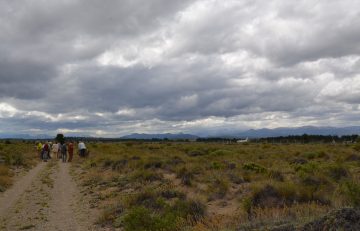
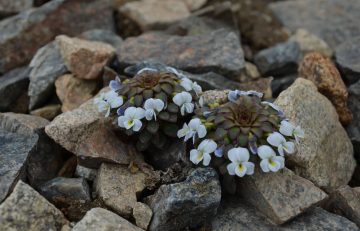
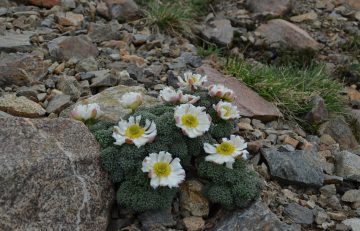
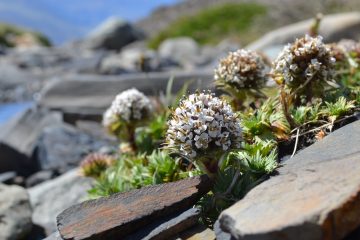
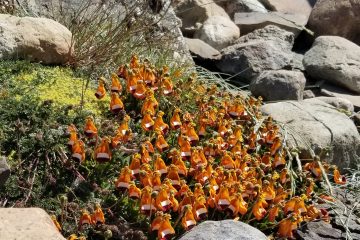
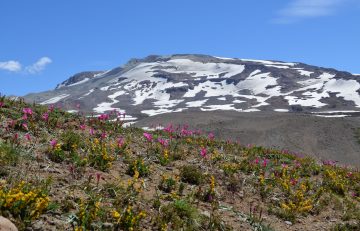
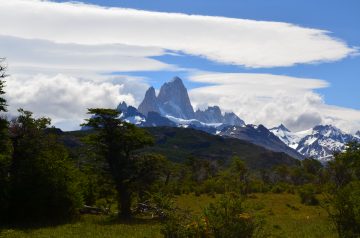
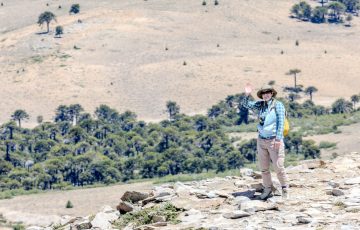
You have captured our trip so well, Laura – thanks for the memories. I still haven’t sorted out all the Nassauvia!